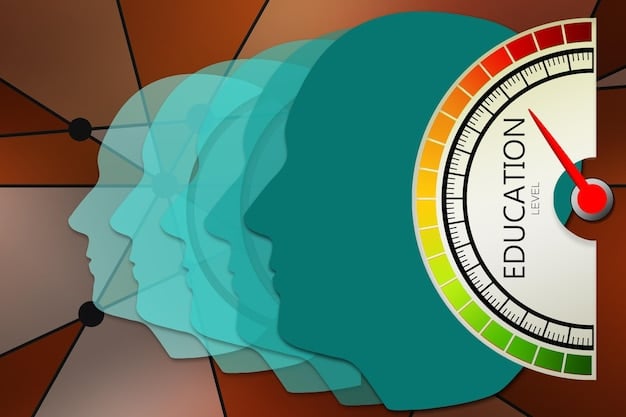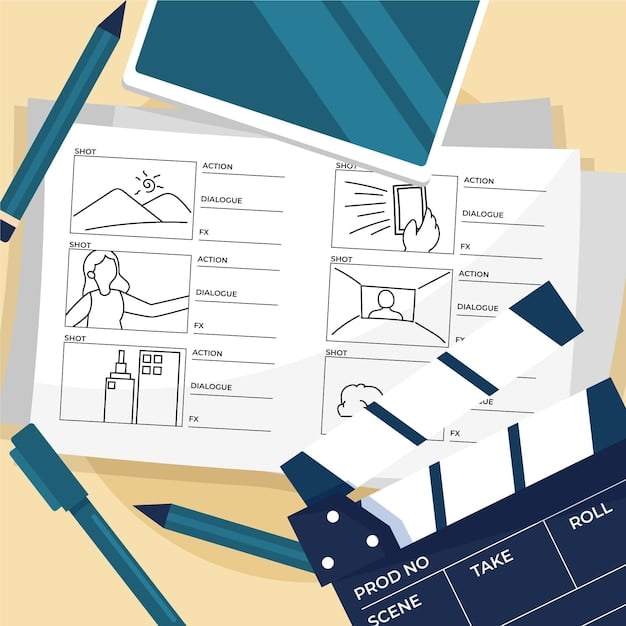Unlock Learning Potential: The Power of Microlearning in 15-Minute Sessions

Microlearning harnesses the power of short, focused 15-minute daily sessions to transform your skill set, making learning more accessible, engaging, and effective for busy individuals seeking continuous personal and professional development in the fast-paced world.
Are you struggling to find time for professional development or personal growth? Discover the power of microlearning: how 15-minute daily sessions can transform your skill set, making learning more manageable and effective.
What is Microlearning? A Deep Dive
Microlearning has emerged as a leading learning strategy, offering a streamlined approach to skill enhancement. Let’s explore the intricacies of what exactly microlearning entails and how it differs from traditional learning methods.
Defining Microlearning
Microlearning involves delivering content in small, specific bursts. These bursts are designed to focus on a single learning objective, making the information easier to digest and retain.
Microlearning vs. Traditional Learning
The key difference lies in the format and delivery. Traditional learning often involves long lectures and comprehensive materials, while microlearning breaks down content into manageable segments.
- Time Commitment: Microlearning requires significantly less time compared to traditional courses.
- Focus: Each microlearning module focuses on a very specific skill or piece of knowledge.
- Engagement: Microlearning is often more engaging due to its interactive and multimedia-rich nature.
- Accessibility: Microlearning can be accessed on various devices, making it convenient for on-the-go learning.
Microlearning provides a more efficient and flexible way to learn, integrating seamlessly into daily routines and enhancing the learning experience.
The Science Behind Microlearning’s Effectiveness
The potency of microlearning isn’t just anecdotal; it’s rooted in solid cognitive science. Let’s explore the scientific principles that make short, focused learning sessions so effective.
Cognitive Load Theory
Cognitive Load Theory suggests that our brains have a limited capacity for processing new information. Microlearning reduces cognitive overload by presenting information in bite-sized pieces.
Spaced Repetition
Spaced repetition involves reviewing information at increasing intervals. Microlearning aligns with this by allowing learners to revisit key concepts frequently in short sessions, enhancing long-term retention.

- Attention Span: Shorter sessions align with the human attention span, ensuring learners stay focused.
- Memory Retention: Regular, brief reviews improve long-term memory retention.
- Reduced Stress: Smaller chunks of information are less intimidating and reduce learning anxiety.
Microlearning leverages how our brains naturally process and retain information, making it a scientifically sound approach to learning.
Benefits of Incorporating 15-Minute Learning Sessions
Embracing microlearning offers a plethora of benefits that extend beyond just convenience. Discover the profound advantages of incorporating 15-minute learning sessions into your daily routine.
Improved Knowledge Retention
Microlearning enhances knowledge retention by reinforcing key concepts through repeated exposure in short intervals.
Increased Engagement
The interactive nature of microlearning keeps learners engaged and motivated, leading to a more effective learning experience.
Microlearning transforms learning from a chore into a manageable and enjoyable activity, fitting seamlessly into busy lifestyles and empowering individuals to achieve their learning goals.
How to Design Effective Microlearning Modules
Creating impactful microlearning modules requires careful planning and design. Let’s explore the key elements that go into crafting microlearning experiences that deliver results.
Define Clear Learning Objectives
Each module should focus on a single, specific learning objective. This clarity helps learners understand what they need to learn.
Use Multimedia Elements
Incorporate videos, infographics, and interactive elements to keep learners engaged and cater to different learning styles.

- Keep it Concise: Each module should be short and to the point, ideally completed in 15 minutes or less.
- Make it Interactive: Include quizzes, polls, and other interactive elements to reinforce learning.
- Provide Feedback: Offer immediate feedback to learners to help them understand their progress.
With thoughtful planning and design, microlearning modules can be a powerful tool for delivering targeted and effective knowledge transfer.
Real-World Examples of Microlearning in Action
Microlearning is not just a theoretical concept; it’s being successfully implemented across various industries and contexts. Let’s explore some real-world examples of how organizations are leveraging microlearning to enhance their training programs.
Corporate Training
Companies use microlearning to train employees on new software, compliance procedures, and product knowledge. These modules are easily accessible and can be completed during short breaks.
Healthcare Education
Healthcare professionals use microlearning to stay updated on the latest medical advancements and protocols. Short videos and interactive simulations help reinforce critical skills.
Microlearning has demonstrated its versatility and effectiveness in a range of settings, empowering learners to acquire knowledge and skills in a more accessible and engaging manner.
Tools and Platforms for Creating Microlearning Content
Creating effective microlearning content requires the right tools and platforms. Let’s explore some of the options available to help you design and deliver impactful microlearning experiences.
Learning Management Systems (LMS)
Many LMS platforms offer features for creating and delivering microlearning modules. These systems allow you to track learner progress and measure the effectiveness of your content.
Mobile Learning Apps
Mobile learning apps provide a convenient way to deliver microlearning content to learners on the go. These apps often include features like push notifications and gamification to enhance engagement.
- Articulate Rise 360: A web-based tool for creating responsive microlearning courses.
- iSpring Suite: A PowerPoint add-in for creating interactive e-learning content.
- Quizizz: A platform for creating engaging quizzes and polls to reinforce learning.
With the right tools and platforms, creating and delivering microlearning content can be a streamlined and efficient process, empowering organizations to enhance their training programs and improve learning outcomes.
| Key Point | Brief Description |
|---|---|
| 🧠 Cognitive Benefits | Enhances memory and retention through short, focused sessions. |
| ⏱️ Time Efficiency | Fits seamlessly into busy schedules with manageable 15-minute modules. |
| 📱 Accessibility | Available on various devices, enabling learning on the go. |
| 🎯 Targeted Learning | Focuses on specific objectives, ensuring efficient knowledge transfer. |
Frequently Asked Questions (FAQ)
▼
The ideal length of a microlearning module is typically between 3 to 15 minutes. This duration aligns with the average attention span and allows for focused learning on a specific topic.
▼
Microlearning is most effective when used as a supplement to traditional training. It can reinforce key concepts, provide just-in-time learning, and support continuous professional development, rather than replace comprehensive training.
▼
Microlearning content can take many formats, including short videos, infographics, quizzes, interactive simulations, and brief articles. The key is to deliver concise, focused information.
▼
Effectiveness can be measured through quizzes, surveys, and performance metrics. Tracking learner engagement and knowledge retention helps assess the impact of microlearning on skill development and productivity.
▼
Microlearning can benefit various learners due to its flexibility and accessibility. However, individuals with complex learning needs might require more structured, comprehensive training alongside microlearning modules for optimal results.
Conclusion
In conclusion, the power of microlearning: how 15-minute daily sessions can transform your skill set lies in its ability to seamlessly integrate into busy lives, offering accessible, engaging, and effective learning experiences. By leveraging scientifically-backed principles and innovative tools, microlearning empowers individuals to achieve continuous personal and professional growth.





